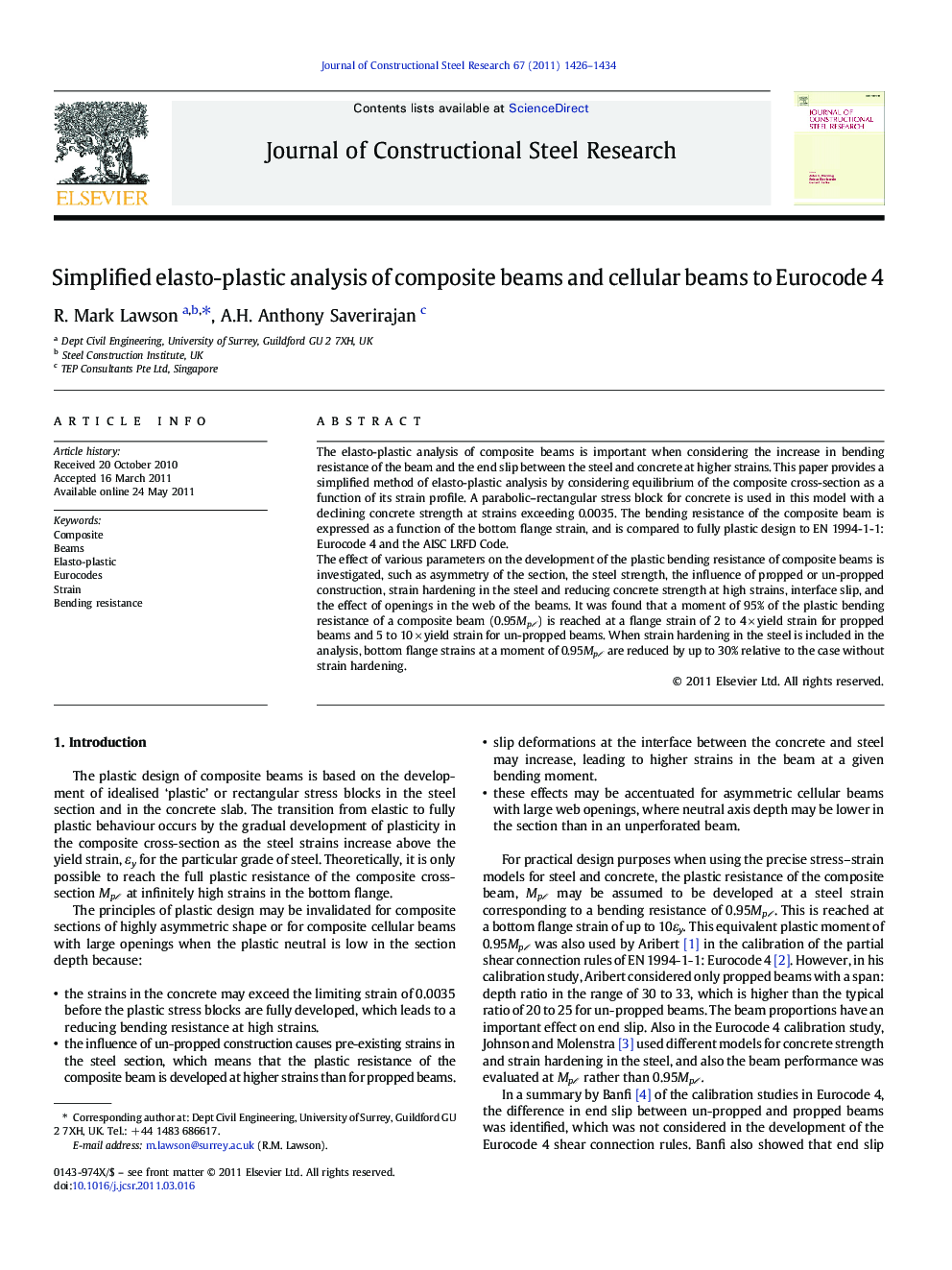| کد مقاله | کد نشریه | سال انتشار | مقاله انگلیسی | نسخه تمام متن |
|---|---|---|---|---|
| 285455 | 509198 | 2011 | 9 صفحه PDF | دانلود رایگان |

The elasto-plastic analysis of composite beams is important when considering the increase in bending resistance of the beam and the end slip between the steel and concrete at higher strains. This paper provides a simplified method of elasto-plastic analysis by considering equilibrium of the composite cross-section as a function of its strain profile. A parabolic–rectangular stress block for concrete is used in this model with a declining concrete strength at strains exceeding 0.0035. The bending resistance of the composite beam is expressed as a function of the bottom flange strain, and is compared to fully plastic design to EN 1994-1-1: Eurocode 4 and the AISC LRFD Code.The effect of various parameters on the development of the plastic bending resistance of composite beams is investigated, such as asymmetry of the section, the steel strength, the influence of propped or un-propped construction, strain hardening in the steel and reducing concrete strength at high strains, interface slip, and the effect of openings in the web of the beams. It was found that a moment of 95% of the plastic bending resistance of a composite beam (0.95Mpℓ) is reached at a flange strain of 2 to 4 × yield strain for propped beams and 5 to 10 × yield strain for un-propped beams. When strain hardening in the steel is included in the analysis, bottom flange strains at a moment of 0.95Mpℓ are reduced by up to 30% relative to the case without strain hardening.
Research highlights
► The elasto-plastic analysis of composite beams is important when considering the increase in bending resistance and end slip at higher strains.
► The paper provides a simplified method of analysis by considering equilibrium of the composite cross-section as a function of the strain profile.
► The bending resistance of the composite beam is expressed as a function of the bottom flange strain, and is compared to fully plastic design to EN 1994-1-1: Eurocode 4 and the AISC LRFD Code.
► The effect of various parameters on the development of the plastic bending resistance of composite beams is investigated.
► It was found that a moment of 95% of the plastic bending resistance of a composite beam (0.95Mpℓ) is reached at a flange strain of approximately 4× yield strain for propped beams and up to 10 × yield strain for un-propped beams.
► For highly asymmetric beams, unloading of the compression force in the concrete occurs at high strains, and the bending resistance reduces rapidly with increasing strain.
► The effect of slip has a relatively small effect on the development of the bending resistance of the composite beam at high strains.
► Asymmetric cellular composite beams reach their plastic bending resistance at higher strains than the same un-perforated beam.
► Longitudinal shear forces in the slab may be assumed to vary linearly with moment ratio in un-propped construction.
Journal: Journal of Constructional Steel Research - Volume 67, Issue 10, October 2011, Pages 1426–1434